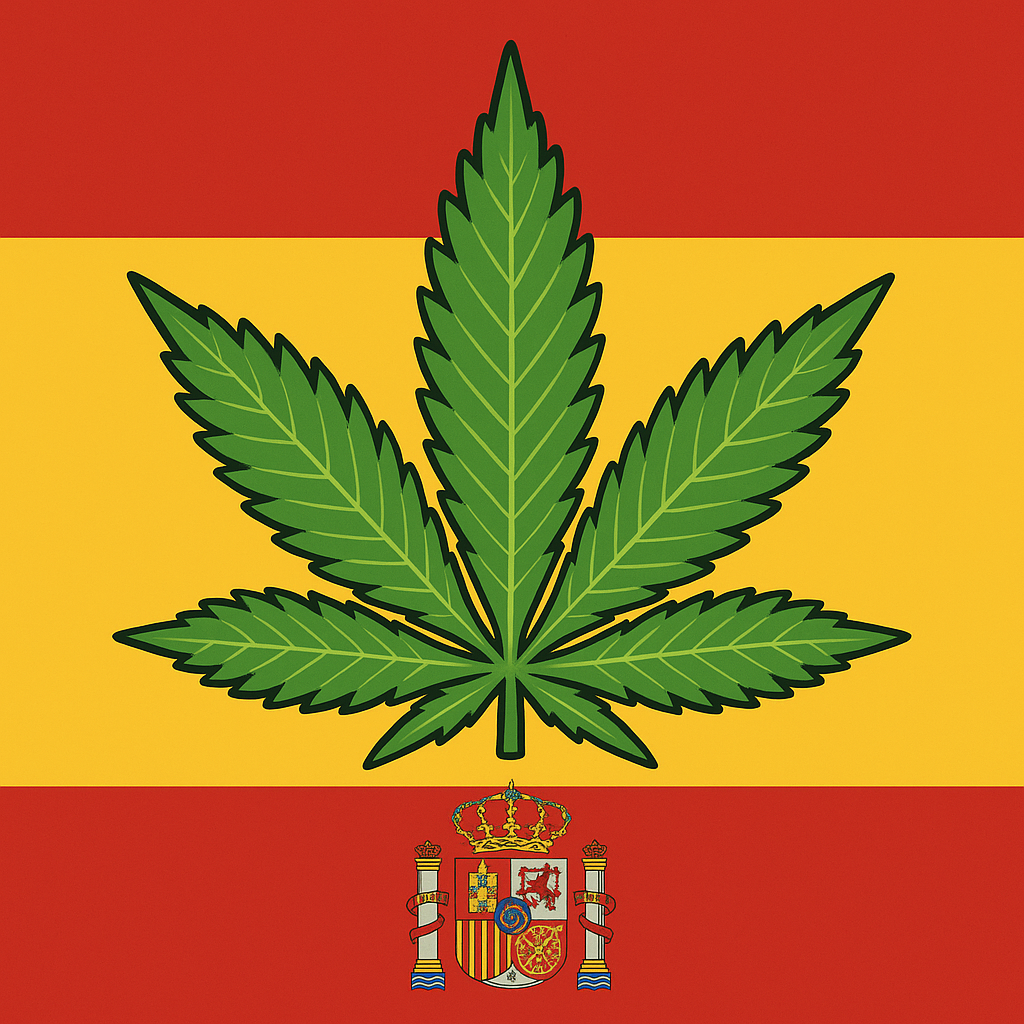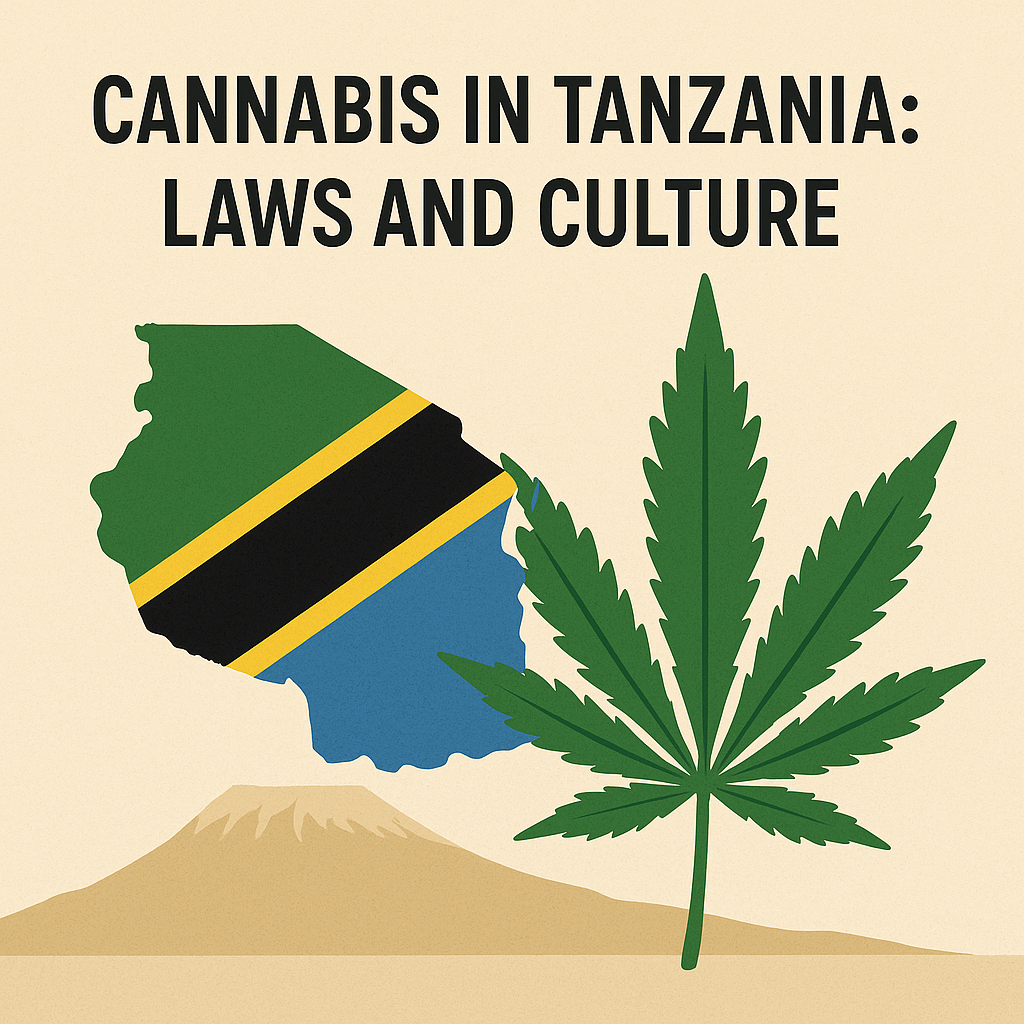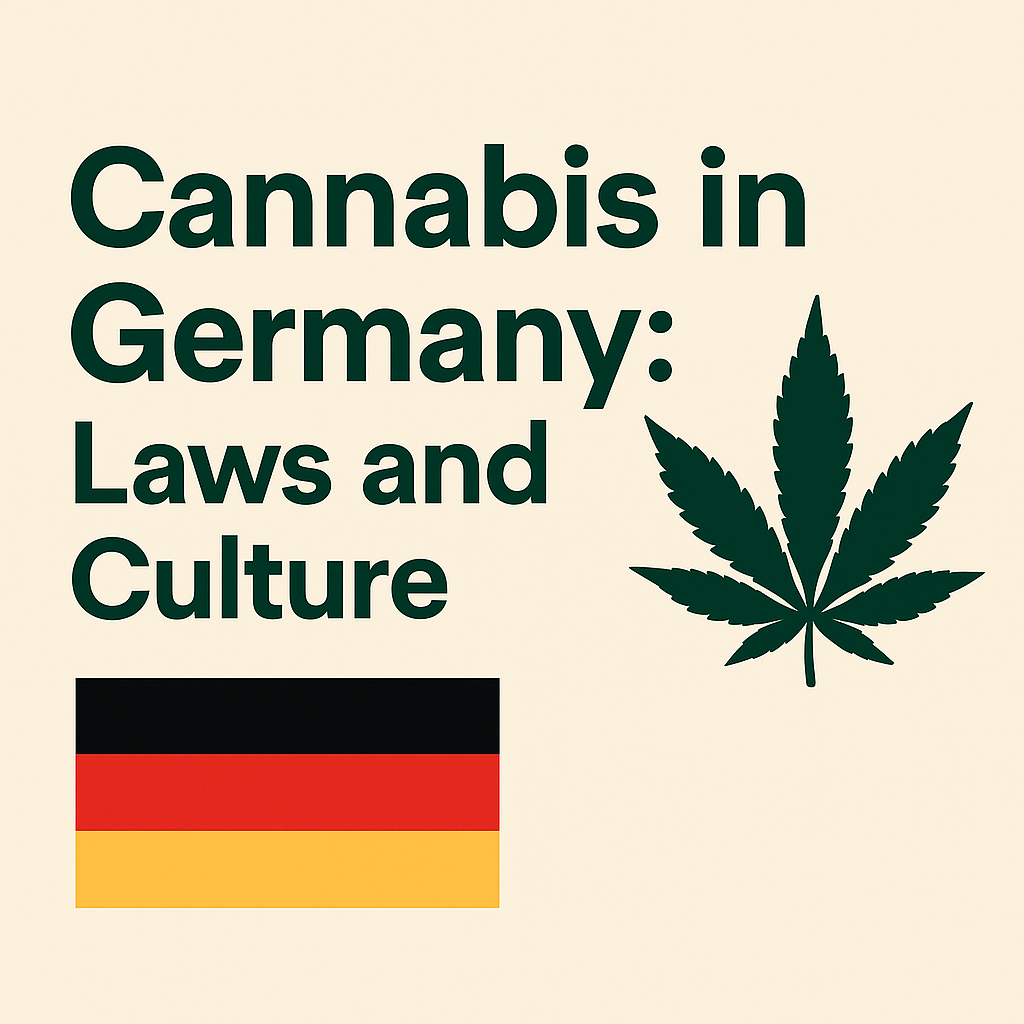Europe's economic powerhouse becomes the continent's largest legal cannabis market through cautious innovation and medical expansion
5 Key Takeaways
1. Historic Legalization: Germany became the ninth country globally to legalize recreational cannabis on April 1, 2024, with the Cannabis Act (CanG) allowing possession of up to 25 grams in public and 50 grams at home, making it Europe's largest legal cannabis market by population and economy.
2. Social Club Innovation: Nearly 300 cannabis social clubs have received government approval since legalization, with 83 licenses granted as of January 2025 out of 444 applications, creating a unique nonprofit collective cultivation model limited to 500 members each.
3. Medical Cannabis Boom: Germany's medical cannabis patient population exploded from 200,000 in April 2024 to nearly 900,000 by May 2025, potentially making it the world's largest medical cannabis market with sales expected to reach €420 million in 2024 and over €1 billion by 2028.
4. Cautious Approach: No commercial sales are permitted under the current system, with tourists and non-residents unable to legally access cannabis, reflecting Germany's gradual "two-pillar" reform model designed to navigate EU legal constraints.
5. European Influence: Germany's legalization represents a significant expansion in cannabis accessibility across Europe's largest economy, potentially creating a tipping point for continental cannabis policy reform while maintaining compliance with international treaties.
Introduction
In a former industrial building on the outskirts of Berlin, members of Club Blum tend to their collective cannabis garden—a scene that would have been unthinkable just two years ago. This Berlin-based collective purchased a grow space outside the city and is led by professionals who handle growing and legal aspects, while operations are supported by engaged members. Yet this modest facility represents something extraordinary: the world's most ambitious experiment in regulated cannabis liberalization within existing international drug control frameworks.
On April 1, 2024, Germany became the ninth country worldwide to legalize recreational cannabis with the Cannabis Act (Cannabisgesetz or CanG), but did so in a uniquely cautious way that reflects both its pragmatic political culture and its position as Europe's economic anchor. According to a YouGov poll in February 2024, 42% of Germans stated that they either somewhat or completely support cannabis legalization, while 47% somewhat or completely oppose it, reflecting divided but evolving public opinion. German lawmakers passed the cannabis legalization bill with a vote of 407 to 226 on February 23, 2024, making Germany the third European country after Malta and Luxembourg to legalize recreational cannabis. Unlike the commercial markets of North America or the informal tolerance of the Netherlands, Germany has pioneered a "third way" that emphasizes nonprofit social clubs, robust medical access, and careful regulatory oversight designed to satisfy both domestic reformers and international legal obligations.
This approach matters far beyond Germany's borders. As the largest European country by population and economy to legalize adult-use cannabis, Germany's experience will influence cannabis policy across the European Union and beyond. Health Minister Karl Lauterbach, the physician and epidemiologist who spearheaded the reform, explained the government's rationale: "The aim is to crack down on the black market and drugs-related crime, reduce the amount of dealing and cut the number of users. Child and youth protection is at the heart of what this law is meant to achieve." The country's methodical approach to legalization—splitting reform into phases and emphasizing medical access—offers a template for other nations seeking to liberalize cannabis laws while maintaining political and legal stability.
Yet Germany's cannabis story is still being written. The newly elected CDU/CSU government in February 2025 has pledged to roll back parts of the cannabis liberalization law, creating uncertainty about the future of both recreational and medical programs. Political tensions, implementation challenges, and evolving public attitudes will determine whether Germany's cannabis experiment expands into a fully regulated market or retreats toward more restrictive policies.
The stakes extend beyond cannabis policy to fundamental questions about German federalism, European integration, and the country's role in global drug policy reform. As Germany navigates these challenges, its experience provides crucial insights into the possibilities and limitations of incremental cannabis liberalization in complex democratic systems.
The Deep Roots: Cannabis in Historical Germany
From Medieval Hemp to Modern Prohibition
The earliest findings of hemp-based ropes and fabrics in Europe were made in the Stuttgart area and can be dated back to the pre-Roman period (800-400 BC), with fabrics made from bast stripped from the plant's stem. This archaeological evidence places Germany at the center of Europe's oldest cannabis cultivation traditions, establishing patterns of use that would persist for millennia.
However, Germany's relationship with cannabis underwent dramatic transformation in the 20th century. On March 25, 1872, the first legal regulation on cannabis was introduced in Germany, determining that drugs and various chemical preparations could be sold exclusively by pharmacies. Before this ordinance, possession, consumption and trade in cannabis was legally and statutorily not regulated, with hemp widely cultivated to make paper and linen—the first Gutenberg Bible was printed on hemp paper.
The post-World War II period marked the beginning of strict cannabis prohibition in Germany, aligning with international drug control efforts. From 1982 to 1996, farmers in Germany were prohibited from cultivating hemp plants on their fields, effectively ending centuries of traditional cultivation. This prohibition was only lifted in 1996 after widespread protests from farmers, scientists and enthusiasts, allowing cultivation of varieties with THC content below 0.2 percent.
Ancient Foundations and Medieval Applications
During the early Middle Ages, retting—a biological process for separating plant fibers previously used for flax—was transferred to hemp, while nutritious hemp seeds were used as a food staple. Medieval German communities developed sophisticated techniques for processing hemp fiber that would later influence industrial methods across Europe. The integration of hemp into daily life was so complete that traditional hemp dishes are still prepared in some former German provinces, such as Silesian hemp soup made from hemp seeds and millet.
In the 14th century, the traditional Chinese art of making paper arrived in Germany via Italy, creating new applications for hemp fiber. The very canvas on which Renaissance artists created their masterpieces took its name from the genus Cannabis, and the oil in paint was often derived from hemp seed. This period established hemp as essential to both practical crafts and high culture, embedding it deeply in German social and economic life.
By the 1400s, use of cannabis for medicinal purposes was well-established, with cannabis oil widely used to treat inflammation, coughs, parasitical infections, gonorrhoea and more. The preservation of these medical traditions through medieval universities created a foundation of therapeutic knowledge that would later inform modern medical cannabis research.
Imperial Expansion and Industrial Integration
From the sixteenth to the eighteenth centuries, hemp and flax dominated among the fiber crops of Asia, Europe, and North America, with German trading ships relying on hemp for sails and rigging. German hemp cultivation expanded to serve not only domestic needs but also international maritime trade, making the crop strategically important to the emerging German states.
The period of imperial expansion brought new cannabis varieties to Germany. Trading expeditions to Africa and Asia around the 1500s saw sailors return with 'Indian Hemp'—much more potent strains of cannabis that were incorporated into medical practice, though their use wouldn't become widespread until the mid-1800s. This introduction of psychoactive varieties alongside traditional hemp created a diverse cannabis culture that encompassed both utilitarian and therapeutic applications.
Industrial development transformed German hemp production during the 18th and 19th centuries. In the 19th century, jute and sisal from the colonies competed with hemp at half the price, while German hemp also faced pressure from cheaper imports from Russia. These economic pressures, combined with displacement by wood in the pulping sector, resulted in steady decrease in acreage used for hemp cultivation through the 19th and 20th century.
However, hemp became a war profiteer during the two world wars, as German governments, cut off from overseas supplies of cotton, jute, sisal and ramie, reconsidered hemp and supported improvements to cultivation, harvesting and processing technologies. This wartime experience demonstrated hemp's strategic value and maintained technical knowledge that would prove crucial during later periods of liberalization.
Prohibition Era and Cultural Persistence
On March 25, 1872, the first legal regulation on cannabis was introduced in Germany, determining that drugs and various chemical preparations could be sold exclusively by pharmacies. This marked the beginning of formal cannabis regulation, though before this ordinance, possession, consumption and trade in cannabis was legally and statutorily not regulated.
Cannabis never really went away in Germany, continuing to be valued as a medicine, food product and ritualistic plant right until the 20th century, when prohibition began to take hold. The persistence of cannabis knowledge through periods of restriction created underground networks of cultivation and use that would later facilitate modern liberalization efforts.
From 1982 to 1996, farmers in Germany were prohibited from cultivating hemp plants on their fields, but in 1996, after a 14-year ban, Germany legalized the cultivation of industrial hemp with a THC content not exceeding 0.2 percent. This renewed legalization was largely due to widescale protests from farmers, scientists and enthusiasts, demonstrating the persistence of pro-hemp advocacy even during prohibition periods.
The advocacy efforts that achieved hemp re-legalization in 1996 created organizational structures and political networks that would later support broader cannabis liberalization. These groups maintained expertise about cannabis cultivation, connected farmers with researchers, and provided policy alternatives that influenced later reform efforts.
The Legal Revolution: Understanding Germany's Cannabis Laws
The Two-Pillar Framework
Due to the stringent legal requirements posed by EU and international law, the Federal Government decided to take a two-stage approach: first enabling private self-cultivation of cannabis by adults for personal consumption and cooperative, non-commercial self-cultivation in cultivation associations. This cautious approach reflects Germany's position within complex international legal frameworks while enabling significant domestic cannabis liberalization.
The Cannabis Act (Cannabisgesetz or CanG) partially legalised the possession and cultivation of cannabis for recreational consumption by adults aged 18 and above in Germany, with possession of up to 25 grams allowed in public and up to 50 grams of dried cannabis in private. Adults are allowed to have up to three cannabis plants at home, while those aged 18 to 21 are restricted to a maximum purchase limit of 30 grams of cannabis.
The legislation creates clear boundaries around cannabis use. Consumption of cannabis within 100 metres of certain areas including schools, kindergartens, public playgrounds, sports facilities and pedestrian zones in city centers between 07:00 and 20:00 is prohibited, reflecting concerns about protecting minors and maintaining public order.
In a second step, a regional and time-limited pilot project is to be launched to test and scientifically evaluate the controlled dispensing via commercial supply chains. However, pillar 2 legislation is likely not coming to fruition under the new government, creating uncertainty about future commercial cannabis development.
Cannabis Social Clubs: Collective Cultivation Reimagined
Since 1 July 2024, it has been legal for adult residents of Germany to form and join non-profit cannabis social clubs, with each club's membership restricted to a maximum of 500 persons. This system represents Germany's unique approach to recreational cannabis, more akin to the situation in Barcelona than American states or the Netherlands.
Cannabis social clubs are not-for-profit organizations authorized to grow and distribute cannabis in limited amounts, with members required to stay with clubs for a minimum of three months and unable to be part of multiple clubs simultaneously. Each club can grow only for their members, with members purchasing a maximum of 50 grams per month, creating an annual club maximum of 300 kilograms.
The regulatory framework for clubs is extensive. Cannabis clubs must be located at least 200 meters away from schools, children's and youth facilities, and playgrounds, cannot be located inside dwellings or on residential properties, and undergo regular inspections to ensure compliance. Cultivation operations like watering and trimming must be done by members, with advertising, marketing, or sponsoring in any form prohibited.
As of recent surveys, 293 cannabis cultivation associations have been approved nationwide, with North Rhine-Westphalia leading with 83 approved clubs, followed by Lower Saxony with 55. However, implementation has been challenging, with licensing processes delayed by bureaucratic hurdles and inconsistent regulations across federal states.
Medical Cannabis: From Restriction to Expansion
Germany legalized medical cannabis in 2017, allowing seriously ill patients to obtain cannabis with a doctor's prescription, paid for by health insurance. The medical framework initially operated under restrictive conditions, but following the adoption of the CanG Act, the medical cannabis market is witnessing significant growth due to cannabis being removed from Germany's schedule of narcotic drugs.
Germany's medical cannabis patient base has grown to over 200,000, with medical sales in the German cannabis market reaching roughly $500 million in 2024 and projected to exceed $1 billion by 2028. This growth reflects a 1,000 percent increase in business since legalization started for some medical cannabis service providers.
Germany has an established reimbursement framework for medical cannabis treatments by statutory health insurers, with public support accounting for approximately half of the market until 2023. In July 2024, Germany's Federal Joint Committee approved proposals to streamline the reimbursement process, likely making medical cannabis more affordable for several patients.
However, the medical system faces ongoing challenges. A survey of more than 2,500 medical cannabis patients reveals that 42% would return to the illicit market without continued digital access to medical cannabis therapy, highlighting the importance of telemedicine platforms in ensuring patient access.
Driving Laws and Public Safety
Based on recommendations from an interdisciplinary working group, the coalition parliamentary groups introduced a law to amend the Road Traffic Act, approved on 6 June 2024 and entering force on 22 August 2024. The law introduces a legal THC threshold value of 3.5 ng/ml in blood serum, provides for a cannabis ban for novice drivers, and prohibits mixed consumption of cannabis and alcohol.
The driving regulations reflect Germany's cautious approach to cannabis liberalization, establishing clear safety standards while enabling legal use. A driving licence will only be refused or revoked in cases of cannabis dependency or abuse, with regulations adapted to mirror those that apply to alcohol in road traffic.
Contemporary Cannabis Culture in Germany
Demographics and Usage Patterns
With an estimated 4.5 million cannabis users in Germany as of early 2024, legalization has brought this consumption into a regulated framework. According to a YouGov poll in February 2024, 42% of Germans stated they either somewhat or completely support cannabis legalization, while 47% somewhat or completely oppose it, reflecting a divided but evolving public opinion.
Cannabis use in Germany shows distinct regional and generational patterns. Urban areas, particularly Berlin, Hamburg, and Munich, demonstrate higher acceptance rates and more visible cannabis culture, while rural areas maintain more conservative attitudes. Younger Germans show significantly higher support for legalization, suggesting continued cultural shift toward acceptance over time.
The medical cannabis boom has contributed to changing attitudes. In September 2024, a representative survey revealed that 94 percent of Germans reported consuming cannabis for at least one medical or health reason, demonstrating the blurred lines between recreational and therapeutic use that characterize modern cannabis culture.
The Social Club Ecosystem
Cannabis clubs and associated businesses are now popping up to make the most of new opportunities, with clubs accepting new members and purchasing grow spaces outside major cities. Membership costs vary greatly from club to club, with examples ranging from €12 per month for Cannabis Social Club Berlin to €25 per month for Mariana Cannabis Club in Hamburg.
To ensure clubs are truly non-profit, strict rules regarding financial transparency are enforced, with membership fees required to cover operational costs such as cultivation, staff, and licensing without going beyond this. This nonprofit requirement distinguishes German clubs from commercial cannabis businesses elsewhere while creating challenges for sustainable operations.
German clubs face unique challenges including the need to quickly build facilities to meet immediate demand while keeping each facility small, with facility size restricted by association size rather than market demand. Clubs must navigate both state and federal regulations, which can be very time-consuming, with approval times often very long and different processes across states.
The diversity of club approaches reflects different regional cultures and membership needs. Traditional activist clubs focus on education and community building, while other clubs emphasize high-quality cultivation and member services, creating an ecosystem that serves various cannabis user preferences.
Technology and Service Innovation
The cannabis legalization has created opportunities for service companies like Club Soul, which provides software solutions to help clubs manage memberships, cultivation processes, logistics, and distribution. These technological innovations demonstrate how legalization creates broader economic opportunities beyond direct cannabis cultivation and distribution.
With a team of dedicated legal experts, companies like Club Soul aim to create full transparency and keep cannabis clubs within legal bounds, offering assistance with legal interpretation since the law can be difficult for non-lawyers to navigate. This legal support infrastructure reflects the complexity of Germany's regulatory framework and the need for specialized expertise.
Digital platforms have become crucial for medical cannabis access. Companies like Bloomwell Group provide both doctors and pharmacies with digital platforms for medical cannabis, reporting 1,000 percent increases in business since legalization. However, early 2025 saw court rulings ban certain telemedical cannabis platforms from advertising and operating under current practices, citing risks to patient safety.
Cultural Integration and Public Acceptance
Non-psychoactive foods made with hemp seeds are very common in German health food shops, while hemp foods and drinks have become widely available in supermarkets, with drug stores selling various CBD products. This mainstreaming of hemp products has helped normalize cannabis-related commerce and reduced stigma around the plant.
The Hanf Museum (Hemp Museum) was established in Berlin in 1994, with the Hanfparade (Hemp Parade) taking place annually since 1997 as a hemp legalization demonstration. These cultural institutions have maintained cannabis advocacy through prohibition periods and continue to educate the public about cannabis history and applications.
Mary Jane Berlin: Europe's Cannabis Epicenter
Mary Jane Berlin has established itself as the world's largest international cannabis trade fair, with the 2025 edition attracting over 65,000 visitors—including 5,000 industry professionals—over four days at Messe Berlin. What began in 2016 with just 80 booths and around 8,000 guests has grown into Europe's most significant cannabis event, surpassing Spannabis as the continent's largest cannabis expo.
The festival combines trade exposition with cultural celebration, featuring over 500 exhibitors from around the world alongside live music performances, educational conferences, and networking opportunities. In 2024, it was the first year of legalization in Germany, and everyone was looking for any excuse to celebrate, leading to unprecedented turnout with queues stretching for up to two hours.
Mary Jane Berlin is more than just a cannabis expo—it's described by organizers as "a movement committed to education, acceptance and freedom." The event features speakers from medicine, science, and politics debating key issues for the future of cannabis, while also hosting performances by well-known artists from the cannabis culture rap scene. Celebrity appearances, including former world boxing champion Mike Tyson in 2025, demonstrate the event's growing mainstream cultural significance.
German cannabis culture emphasizes education, quality, and community responsibility over pure commercialization. Consumers expect superior quality, especially as cannabis comes from small-scale, locally grown producers, with clubs needing the ability to scale carefully and incrementally. This emphasis on quality and community reflects broader German cultural values around craftsmanship and collective responsibility.
Medical Cannabis and Healthcare Integration
Historical Medical Applications
Early descriptions of cannabis medical applications date back to the 16th century in Germany, establishing a foundation of therapeutic knowledge that persisted through prohibition periods. Medieval universities went to great effort to preserve the country's historic cannabis practices, allowing traditional herbalism to persist despite efforts to suppress it.
The potential medical applications of hemp had been under taboo in Germany for a long time, with cannabinoid research virtually non-existent until recent changes. The revival of medical cannabis research reflects both changing political attitudes and growing clinical evidence for therapeutic applications.
German medical cannabis development has been influenced by international research and patient advocacy. Translation of influential works like "Marihuana - the forbidden medicine" helped German medical professionals understand therapeutic potential, while concurrent modification of the federal narcotics act simplified clinical tests with delta-9-THC.
Contemporary Medical Framework
Germany's medical cannabis patient population exploded from roughly 250,000 in April 2024 to nearly 900,000 by May 2025, making it potentially the largest medical cannabis market in the world by patient numbers, surpassing Florida's 915,000 registered patients. By the end of 2025, Germany may have close to 1.5 million medical cannabis patients, representing close to 2% of the population.
Physicians are allowed to prescribe cannabis for any condition they deem might be improved through cannabis use, creating broad therapeutic access compared to more restrictive medical programs elsewhere. This liberal prescribing framework has contributed to rapid patient population growth while raising questions about appropriate medical oversight.
Medical cannabis imports reached an unprecedented 71.6 tonnes in 2024, more than doubling the previous year's figure of 32.5 tonnes. In the first quarter of 2025, imports reached 37 tonnes, surpassing the previous record and representing a 457 percent increase compared to the same period the previous year.
Supply Chain and Domestic Production
The removal of the tender process has opened the cultivation market to competition, likely leading to increased domestic production and reduced reliance on imports. In mid-2024, Tilray's German subsidiary Aphria RX harvested and released the first medical cannabis grown under the new legal regime from its facility in Neumünster.
As of May 2025, approximately 50% of medical cannabis being sold in Germany is imported from Canada, with Canadian exports to Germany nearly doubling from 17 metric tons in 2023 to 33 metric tons in 2024. However, domestic production is expected to increase as more companies obtain cultivation licenses and develop local supply capacity.
The dramatic price drop from April to May 2025 suggests Germany is approaching an oversupply of imported cannabis flower, benefiting self-paying patients but creating challenges for wholesalers. This market dynamic reflects rapid expansion of both supply and demand in the medical cannabis sector.
Access Challenges and Policy Debates
The German Health Ministry released a draft amendment in July 2025 requiring patients to have an in-person consultation once yearly and as a first step before therapy, with medical cannabis no longer deliverable by mail order. These proposed restrictions reflect ongoing political tensions about appropriate medical cannabis oversight.
A survey of 2,571 patients found that 42% would opt to return to the illicit market without continued digital access to medical cannabis therapy, highlighting the importance of telemedicine in ensuring patient access. Digital access has successfully transitioned hundreds of thousands of patients away from unsafe, unregulated sources into safe, pharmacy-distributed care.
The rapid growth of medical cannabis has created both opportunities and challenges for the German healthcare system. While patients benefit from increased access and falling prices, medical authorities have raised concerns about prescription practices and the need for appropriate clinical oversight of cannabis therapies.
Activism, Politics, and Policy Evolution
The Path to Legalization
The Greens, The Left, and the Free Democratic Party wanted the government to legalize cannabis for private consumption, arguing this would protect consumers from harmful chemicals and reduce stigma. The newly elected German government of SPD, Bündnis 90/Die Grünen and FDP announced cannabis legalization for recreational adult use in their Coalition Agreement 2021-2025.
Health Minister Karl Lauterbach, a physician and epidemiologist, introduced the regulatory framework with an Eckpunktepapier on 26 October 2022. Lauterbach, who had previously opposed cannabis legalization, explained his changed position: "I've always been an opponent of cannabis legalization, but I revised my opinion" based on evidence about the failures of prohibition-based approaches.
The final bill received approval of the governing parties on 2 February 2024, with the Bundestag passing the bill on 23 February 2024 by a vote of 407 to 226, and the Bundesrat approving it on 22 March. The German governing coalition (SPD, Greens, and Free Democrats) and the opposition Left Party voted in favor, while the CDU/CSU and Alternative for Germany voted against. After the successful vote, Lauterbach declared: "Cannabis legalization was passed in the Bundestag with 407 votes to 226. A good day for our failed drug policy."
Political Opposition and Public Debate
Opposition to the regulations focused on health risks and youth protection, with Klaus Reinhardt, President of the German Medical Associations, stating "Cannabis can be addictive and cause serious developmental damage. This country does not need cannabis legalization". These concerns reflect ongoing debates about balancing individual freedom with public health protection.
Conservative opposition has remained consistent throughout the legalization process. The Christian Democratic Union (Angela Merkel's former party) has historically been against legalizing cannabis, and the newly elected CDU/CSU government in February 2025 has pledged to roll back parts of the cannabis liberalization law.
While a complete rollback is unlikely due to the need to form coalitions with parties supportive of reform, stricter regulations are expected, especially for the recreational sector. The changing political landscape creates uncertainty about the future direction of German cannabis policy.
Civil Society and Advocacy Organizations
The Deutscher Hanfverband (German Hemp Association) has coordinated the Global Marijuana March in Germany since 2011, providing organizational leadership for cannabis advocacy efforts. The Deutscher Hanfverband criticized the 15% THC limit in draft regulations, demonstrating active engagement in policy development processes.
Protest groups like "Who Are We Hurting?" brought their advocacy efforts to Berlin in July 2023, distributing hundreds of fake cannabis plant props throughout the city one month prior to Germany announcing legalization. These creative advocacy tactics helped maintain public attention on cannabis policy reform.
Members of the Social Democratic Party criticized the bill because it doesn't allow control of cannabis via licensed stores, arguing this would better tackle organized crime and reduce police burden. This internal debate within the governing coalition reflects different perspectives on optimal cannabis regulation approaches.
Regional Variations and Federal Dynamics
Each German state has different processes and regulations from one another, with differing degrees of transparency and understanding, meaning there's no one-size-fits-all approach that can be shared between clubs. This federalism creates implementation challenges while allowing regional adaptation to local conditions.
North Rhine-Westphalia leads all German states with 83 approved clubs, followed by Lower Saxony with 55, while Saarland has not approved any clubs and Bremen has only two. These regional variations reflect different political cultures and administrative approaches to cannabis regulation.
In some states, officials themselves aren't certain how the law works or who is supposed to be responsible for implementation, creating confusion and delays in the licensing process. This administrative uncertainty demonstrates the challenges of implementing novel regulatory frameworks within complex federal systems.
Economic Dimensions and Market Dynamics
Market Size and Growth Projections
German medical cannabis sales are expected to reach €420 million in 2024, rising to over €1 billion by 2028, making Germany one of the world's largest medical cannabis markets. A 2021 study from the University of Düsseldorf concluded that legal sales of recreational cannabis in Germany could raise over $5.3 billion in additional yearly tax revenue and create 27,000 jobs.
The rapid expansion of medical cannabis has created substantial economic activity. The volume of medical cannabis sold in pharmacies increased by about 30% in Q3 2023 compared with Q3 2022, with patient numbers increasing significantly following implementation of new cannabis laws in April 2024.
The fact that legal cannabis in Germany is more affordable than the illegal market is revolutionary for the global cannabis industry, potentially creating a sustainable model for legal cannabis that competes effectively with illicit suppliers. This price dynamic helps explain the rapid growth in medical cannabis patient registrations.
Supply Chain and International Trade
Germany imported over 37.223 metric tonnes of medical cannabis products in the first quarter of 2025, representing a 14.8 percent increase compared to Q4 2024 and over 457 percent increase compared to the same period the previous year. This massive import growth reflects both expanding patient access and infrastructure development to serve the growing market.
Canadian exports to Germany nearly doubled from 17 metric tons in 2023 to 33 metric tons in 2024, with Canada accounting for 46% of total German cannabis imports. Other significant suppliers include the Netherlands, Portugal, and Australia, creating a diverse international supply network.
A new era of domestic cultivation has begun, with companies like DEMECAN launching German-grown varieties to help diversify the supply base and offer alternatives to patients seeking locally produced medicine. Domestic production development could reduce import dependence while creating additional employment and economic activity.
Employment and Business Development
The cannabis social club system creates direct employment opportunities for club managers, cultivators, and support staff. Members can receive geringfügige Beschäftigung or "minor employment" from clubs, allowing payment of approximately €538 per month, though clubs cannot employ individuals for most cultivation and retail operations.
The legalization has created opportunities for ancillary businesses, including software companies that help clubs manage operations and legal compliance. These service providers demonstrate how cannabis legalization creates economic opportunities beyond direct cultivation and distribution.
Professional services sectors have developed specialized cannabis practices, including legal, accounting, and consulting services that serve both medical cannabis businesses and social clubs. This professional services ecosystem multiplies the economic impact of cannabis legalization while creating high-skilled employment opportunities.
Investment and Innovation
While the global cannabis sector saw record-breaking M&A activity in 2024, German firms have taken a more cautious path, focusing instead on organic growth. This reflects both regulatory uncertainty and the nonprofit nature of much German cannabis activity, which limits traditional investment models.
Cannabis-related innovation extends beyond cultivation to include advanced hydroponic systems, LED lighting technologies, and environmental control systems developed by German companies. These technological developments serve both cannabis and conventional agriculture markets, creating intellectual property assets with broader applications.
The agriculture ministry has received 26 applications for pilot programs that would test commercial cannabis sales, many backed by leading cannabis operators and universities. However, the fate of these potentially significant commercial opportunities remains uncertain under the new government.
Banking and Financial Services
German cannabis businesses face significant challenges accessing traditional financial services due to regulatory uncertainty, forcing many operations to function on cash basis. This creates security, accounting, and tax compliance challenges while limiting business growth and professionalization opportunities.
The cash-heavy nature of cannabis operations requires substantial investment in security measures while maintaining detailed financial records to satisfy tax authorities and demonstrate compliance with nonprofit regulations. These operational challenges increase costs and complexity for cannabis businesses.
Alternative financial service providers have emerged to serve cannabis businesses, though these specialized services often charge premium rates due to perceived regulatory risks. The development of cannabis-specific financial services represents both opportunity and challenge for the broader financial sector.
International Context and Comparative Analysis
Germany's Position in Global Cannabis Reform
Germany's legalization represents a significant expansion in cannabis accessibility across Europe's largest economy, potentially creating a tipping point for continental cannabis policy reform. As the ninth country worldwide to legalize recreational cannabis, Germany's approach offers unique insights into cannabis regulation within existing international frameworks.
The German model's emphasis on nonprofit social clubs and phased implementation has been studied by other European nations considering cannabis reform. The approach demonstrates how countries can expand cannabis access while maintaining compliance with international drug treaties and European Union law.
However, Germany's position within the European Union creates both opportunities and constraints for cannabis policy development. EU agricultural regulations enable industrial hemp cultivation, while single market rules facilitate trade in compliant CBD products, but European frameworks also limit policy options and create compliance requirements.
European Union Dynamics and Integration
Germany argued that its legalization plan is aligned with international treaties, with the legislative process continuing only after receiving green light from the EU. This careful attention to European compliance reflects Germany's central role in EU governance and commitment to multilateral cooperation.
The removal of cannabis from Germany's narcotic drugs schedule required careful coordination with European drug control frameworks to ensure compliance with common standards. This process demonstrates both the possibilities and constraints of cannabis reform within integrated European governance structures.
Recent developments in other EU member states create new dynamics affecting Germany's policy options. As other European countries consider cannabis reform, Germany's experience provides crucial evidence about implementation challenges and policy effectiveness within European legal frameworks.
Learning from International Experiences
German policy makers studied developments in Canada, various U.S. states, and other countries to identify best practices and avoid common pitfalls. The two-pillar approach reflects lessons learned about the challenges of rapid transition from prohibition to commercial markets.
The comparison with Canada is particularly relevant given Germany's imports of Canadian cannabis and similarities in federal governance structures. Canada's experience with implementation challenges and market development has informed German approaches to regulation and oversight.
U.S. state-level experiments provide diverse models for cannabis regulation, though the U.S. federal-state tension creates complexities less relevant to Germany's unitary approach. However, the emphasis on medical access before recreational markets reflects patterns seen in several U.S. states.
Influencing Global Cannabis Policy
Germany's cautious approach to legalization has influenced policy discussions across Europe and beyond, demonstrating how major economies can implement cannabis reform while maintaining international legal compliance. The social club model has been studied and potentially adopted by other countries seeking alternatives to commercial markets.
International drug policy organizations regularly feature German experts and advocate for adoption of German-style reforms in other countries. The German experience provides evidence for incremental reform approaches that may be more politically feasible than comprehensive legalization in many contexts.
However, Germany's influence operates within constraints created by international drug control institutions committed to prohibition-based approaches. The success or failure of German cannabis policies will significantly influence global debates about cannabis regulation alternatives.
Future Trajectories and Emerging Challenges
Political Scenarios and Policy Options
The newly elected CDU/CSU government in February 2025 has pledged to roll back parts of the cannabis liberalization law, though a complete repeal is unlikely due to coalition requirements with parties supportive of reform. The most likely scenario involves stricter regulations, particularly for recreational use and telemedicine access.
If the CDU/CSU wins future elections, they will likely need to form coalitions with parties that supported legalization efforts, making complete rollback unlikely. Instead, stricter regulations are expected, especially for the recreational sector, while pillar 2 commercial legislation is unlikely to advance.
The medical cannabis market, as an established and widely accepted sector, is expected to remain largely unaffected by political changes. However, stricter controls, particularly for telemedicine platforms, might be introduced to address concerns over patient screening and prescription practices.
Regulatory Framework Development
The current system faces significant implementation challenges, with licensing processes delayed by bureaucratic hurdles and inconsistent regulations across federal states. Addressing these administrative problems will be crucial for successful policy implementation regardless of political direction.
Quality control and product safety standards need development as the market expands. Current cannabis markets operate without systematic testing for pesticides, heavy metals, microbials, or potency in many cases, creating potential health risks that require regulatory attention.
The interaction between medical and recreational cannabis frameworks requires clarification as both markets expand. Clear distinctions between medical patients and recreational users, along with appropriate taxation and regulation of each category, remain policy priorities.
Market Development and Economic Impact
If current trends persist, Germany could reach 1.5 million medical cannabis patients by end of 2025, representing close to 2% of the population. This growth trajectory would establish Germany as the world's largest medical cannabis market by patient numbers and economic impact.
The development of domestic cannabis cultivation capacity could reduce import dependence while creating significant employment and tax revenue. However, political uncertainty about future cannabis policies creates investment risks that may limit industry development.
Cannabis social clubs face scaling challenges as demand exceeds current capacity. The current model of small-scale, nonprofit cultivation may prove insufficient to serve growing user populations, potentially creating pressure for commercial market development.
Social and Cultural Evolution
Public opinion polling shows evolving attitudes toward cannabis, with growing acceptance among younger generations and urban populations. However, significant regional and demographic divides remain, creating ongoing political tensions about appropriate cannabis policies.
The integration of cannabis into mainstream German culture continues through medical access, hemp food products, and social club normalization. This cultural shift may create political momentum for further liberalization while also generating opposition from conservative constituencies.
International cultural exchange around cannabis continues to influence German attitudes and practices. Cannabis tourism potential, international business relationships, and policy learning from other countries will shape future cultural and policy development.
Technological and Innovation Frontiers
German cannabis companies continue developing cultivation technologies, processing innovations, and service platforms that serve both domestic and international markets. These technological developments create intellectual property assets and export opportunities beyond direct cannabis commerce.
Digital health platforms for medical cannabis continue evolving despite regulatory challenges. The tension between innovation in healthcare delivery and regulatory oversight of medical cannabis prescribing will require ongoing policy attention.
Research and development activities focus on understanding cannabis therapeutics, optimizing cultivation practices, and developing new applications for cannabis and hemp products. German universities and companies are creating substantial intellectual property portfolios that position them for future market expansion.
Conclusion: Germany's Cannabis Crossroads
Germany's cannabis legalization represents one of the most significant developments in global drug policy reform, demonstrating how major economies can implement cannabis liberalization while navigating complex international legal frameworks. The country's cautious, phased approach offers valuable lessons for other nations considering similar reforms while reflecting distinctly German values of thoroughness, legal compliance, and social responsibility.
The German model's emphasis on nonprofit social clubs, robust medical access, and careful regulatory oversight has created a unique cannabis ecosystem that prioritizes community welfare over commercial profit. This approach has enabled significant expansion of cannabis access while maintaining general social order and political stability, though it has also created implementation challenges and market limitations that may require future policy attention.
Germany's influence extends far beyond its borders, with the country's cannabis policies being studied and potentially emulated across Europe and beyond. As Europe's largest economy and most influential member state, Germany's cannabis experiment provides crucial evidence about the possibilities and limitations of cannabis liberalization within existing international frameworks.
The future of German cannabis policy remains uncertain, with the newly elected government pledging to restrict some liberalization measures while maintaining others. This political dynamic reflects ongoing tensions between reformist and conservative constituencies that characterize cannabis policy debates in many democratic societies.
Whatever direction Germany chooses, its cannabis experience offers valuable insights into the complexities of drug policy reform, the importance of institutional design in policy implementation, and the possibilities for innovation within constrained political and legal environments. Germany's methodical approach to cannabis legalization demonstrates that significant policy change is possible even within complex federal systems and international legal obligations.
The path forward requires careful balancing of competing interests and values: individual autonomy and collective welfare, medical needs and recreational desires, innovation and regulation, national sovereignty and international cooperation. Germany's success in navigating these tensions will influence not only its own cannabis future but also global conversations about drug policy reform in the 21st century.
As Germany continues to implement and refine its cannabis policies, the country's experience will provide crucial evidence about whether gradual, carefully regulated cannabis liberalization can achieve the goals of reducing illegal market activity, protecting public health, and respecting individual autonomy. The German cannabis experiment represents a significant test of whether complex democratic societies can successfully reform drug policies while maintaining political stability and social cohesion.
The stakes extend beyond cannabis policy to fundamental questions about the role of government in regulating personal behavior, the balance between public health and individual freedom, and the possibilities for international cooperation in addressing global drug policy challenges. Germany's cannabis journey offers hope for more effective and humane drug policies while demonstrating the practical challenges of implementing comprehensive policy reform in complex political systems.
What This Means for Cannabis Tourists
Before You Go
Legal Reality Check: Cannabis is legal in Germany in 2025, but tourists cannot legally buy cannabis. The Cannabis Act only allows German residents to use recreationally, and there are no legal dispensaries or shops. Unlike Spain or the Netherlands, Germany has no provisions for tourist cannabis access.
Social Club Restrictions: Cannabis Social Clubs are strictly for German residents. As a tourist or foreigner, you won't be able to join. Club membership requires regional residency, making this legal access route unavailable to visitors.
Possession Limits: If you somehow obtain cannabis, you can possess up to 25 grams in public, but public consumption is restricted. Consumption within 100 metres of schools, kindergartens, public playgrounds, sports facilities and pedestrian zones in city centers between 07:00 and 20:00 is prohibited.
What to Expect
No Legal Cannabis Tourism Infrastructure: Unlike Barcelona or Amsterdam, Germany has not developed legal cannabis tourism infrastructure. There are no coffee shops, cannabis-friendly accommodations, or tourist-oriented cannabis businesses operating within the legal framework.
Practical Reality: While legal access is restricted to residents, cannabis remains readily available through informal channels in German cities, particularly Berlin, Hamburg, and Munich. However, purchasing through these channels carries legal risks and quality concerns that tourists should carefully consider.
Cultural Events: Mary Jane Berlin, the world's largest cannabis trade fair, takes place annually (June 19-22, 2025) and attracts over 65,000 visitors including international attendees. This provides a legal way to engage with cannabis culture, featuring over 500 exhibitors, educational conferences, and cultural programming.
Strict Enforcement: German authorities maintain strict enforcement of residency requirements for legal cannabis access. Attempting to circumvent these rules through social clubs or other means could result in legal consequences.
Medical Cannabis Access: Medical cannabis patients further increased significantly following the implementation of the new cannabis laws in April 2024, but tourist access to medical cannabis remains extremely limited and requires appropriate medical documentation.
Practical Advice
Focus on Legal Alternatives: Germany offers extensive CBD product availability in health food shops and pharmacies. Health food shops and drug stores like dm and Rossmann have begun selling various CBD products, sometimes including THC-free cannabis.
Cultural Experiences: Visit the Hanf Museum (Hemp Museum) established in Berlin in 1994 to learn about cannabis history and culture. Attend the Hanfparade (Hemp Parade) which has taken place annually since 1997 if visiting during the event.
Consider Other Destinations: If cannabis access is important to your travel plans, consider destinations with established cannabis tourism infrastructure like Spain, the Netherlands, or certain U.S. states and Canadian provinces.
Future Outlook
The new CDU/CSU government's pledge to roll back cannabis liberalization makes tourist access even less likely in the near future. If the CDU/CSU wins the elections, they will likely have to form a coalition with parties that supported the legalization efforts. This makes a complete rollback unlikely. Instead, stricter regulations are expected, especially for the recreational sector.
Lessons for UK Cannabis Reform
Germany's experience offers valuable insights for UK cannabis policy discussions, demonstrating both opportunities and challenges of different reform approaches.
What Works
Phased Implementation: Germany's two-pillar approach allows for gradual implementation and policy adjustment based on experience. This methodical approach could appeal to cautious UK policy makers concerned about unintended consequences.
Medical First Strategy: Germany's medical cannabis patient population exploded from roughly 250,000 in April 2024 to nearly 900,000 by May 2025, demonstrating how medical access can build public support and infrastructure for broader reform.
Federal Compliance: Germany's careful attention to international treaty obligations and EU law compliance shows how cannabis reform can proceed within existing international frameworks, relevant for post-Brexit UK policy development.
Social Club Model: The nonprofit social club approach addresses supply chain issues while avoiding full commercialization, potentially appealing to UK constituencies concerned about corporate cannabis interests.
Key Challenges
Implementation Complexity: Licensing processes are being delayed by bureaucratic hurdles and inconsistent regulations across federal states, suggesting that cannabis reform requires substantial administrative capacity and clear regulatory frameworks.
Political Uncertainty: The newly elected CDU/CSU government in February 2025 has pledged to roll back parts of the cannabis liberalization law, demonstrating how political changes can threaten cannabis reform progress.
Banking and Financial Services: German cannabis businesses face significant financial services challenges, highlighting the need for comprehensive regulatory frameworks that address all aspects of legal cannabis commerce.
Tourism Exclusion: Germany's resident-only approach eliminates cannabis tourism opportunities, potentially limiting economic benefits compared to more open systems.
UK Applications
A German-inspired UK approach might involve:
Devolved Implementation: Allowing Scotland, Wales, and Northern Ireland to develop distinct approaches within a UK framework, similar to German federalism but adapted to UK constitutional arrangements.
Medical Cannabis Expansion: Dramatically expanding UK medical cannabis access as a foundation for broader reform, learning from Germany's rapid medical market growth.
Cannabis Social Clubs: Enabling community-based collective cultivation through nonprofit organizations, potentially starting with medical patients before expanding to recreational users.
Cautious Commercialization: Implementing recreational access through controlled social clubs before considering commercial markets, allowing policy learning and public acceptance to develop gradually.
However, the UK's different political system, international position, and cultural context would require significant adaptation of German approaches rather than direct copying. The UK's exit from the European Union provides both more policy flexibility and less multilateral support for cannabis reform compared to Germany's position within EU frameworks.
[Author's Note: This article is based on herbvape.co.uk extensive research of German cannabis laws, policies, and cultural practices current as of 2025. Cannabis laws continue to evolve rapidly, and readers should consult current legal sources for the most up-to-date information. The analysis presented reflects the complex and sometimes contradictory nature of German cannabis regulation and should not be construed as legal advice.]















Leave a comment
This site is protected by hCaptcha and the hCaptcha Privacy Policy and Terms of Service apply.